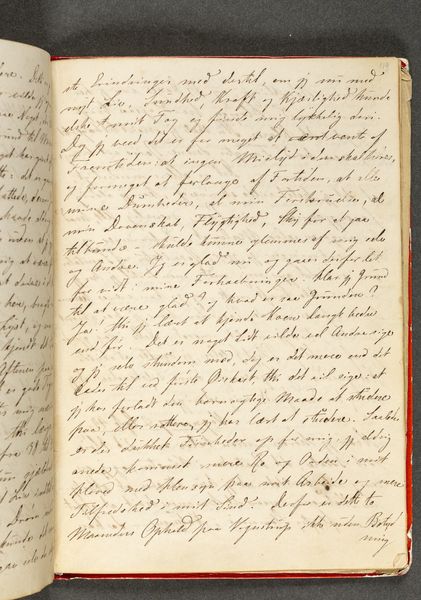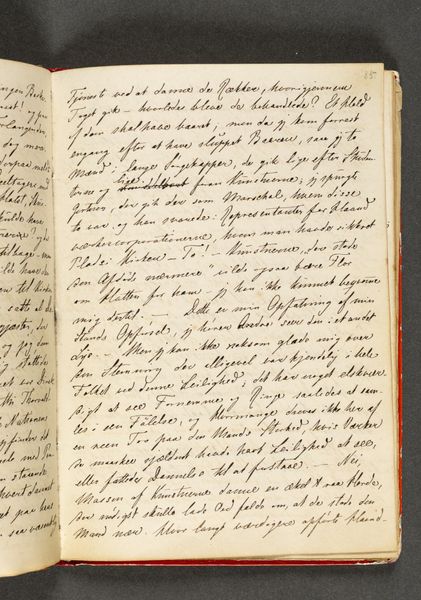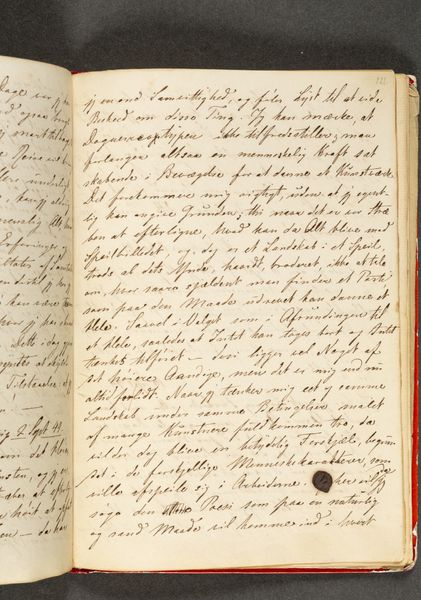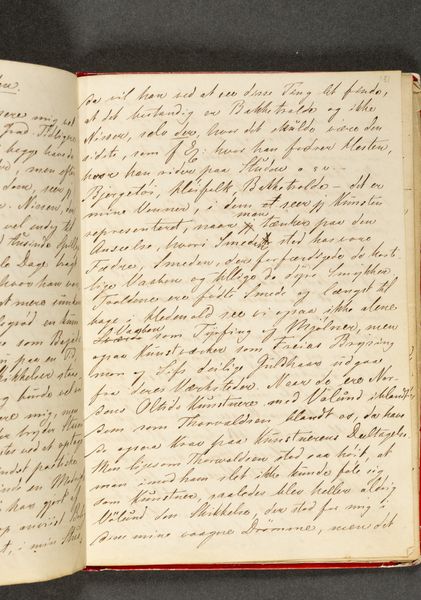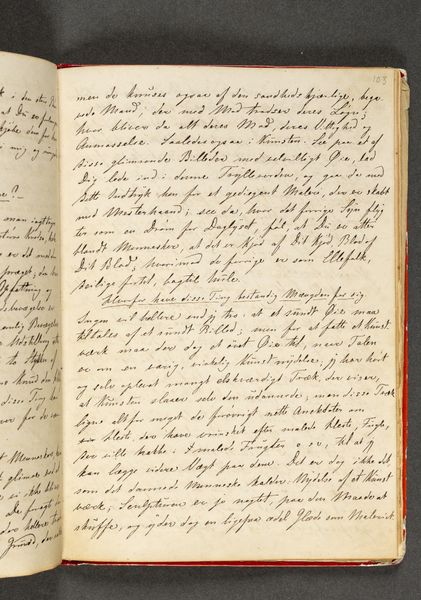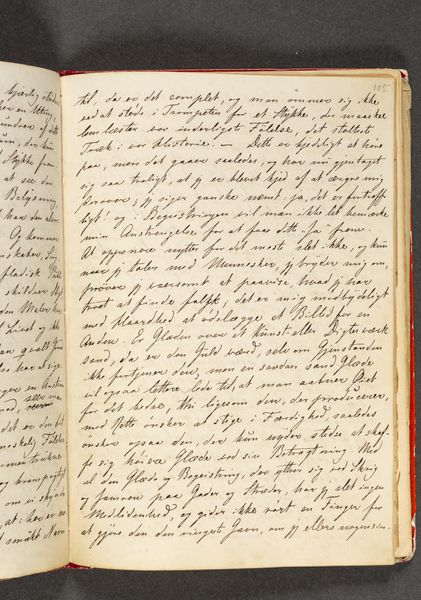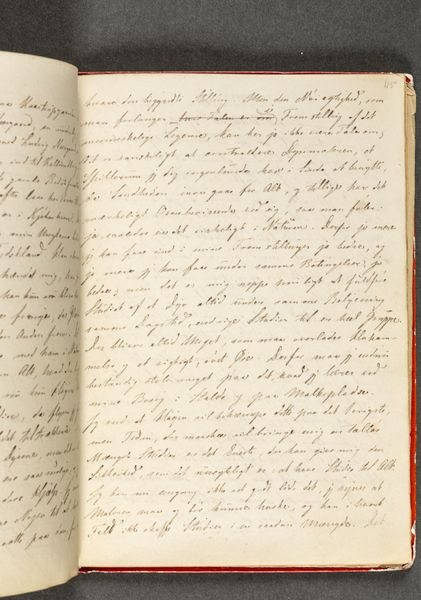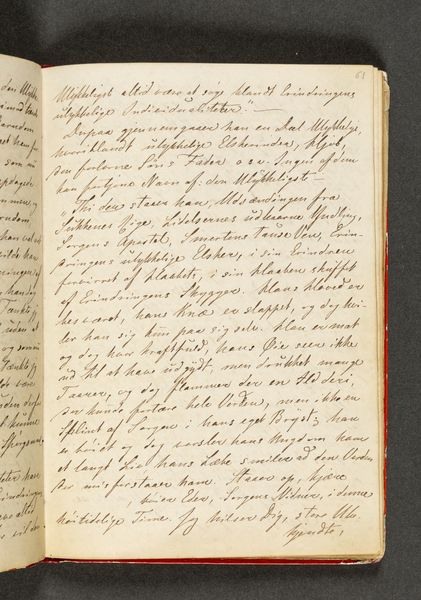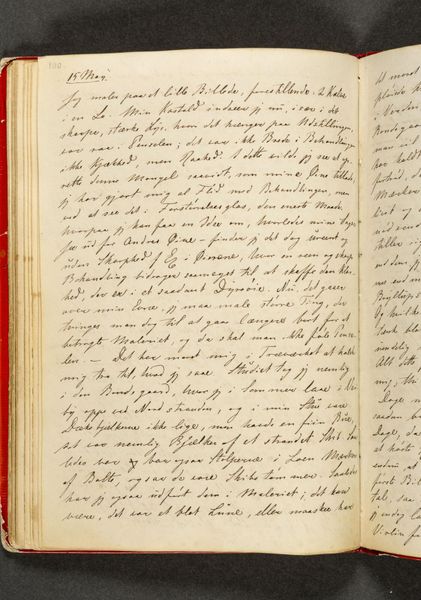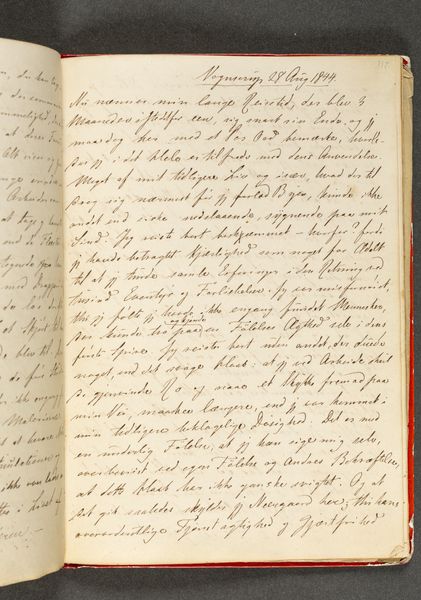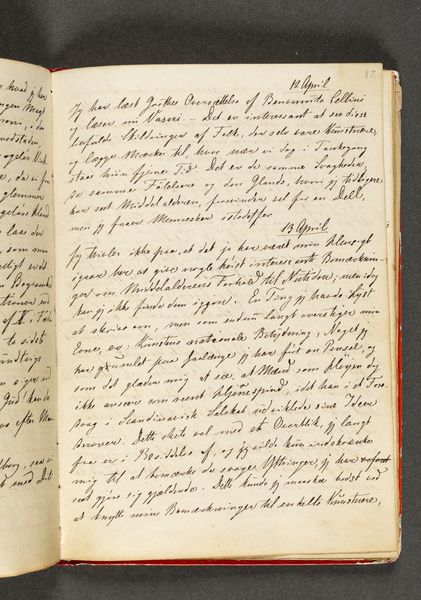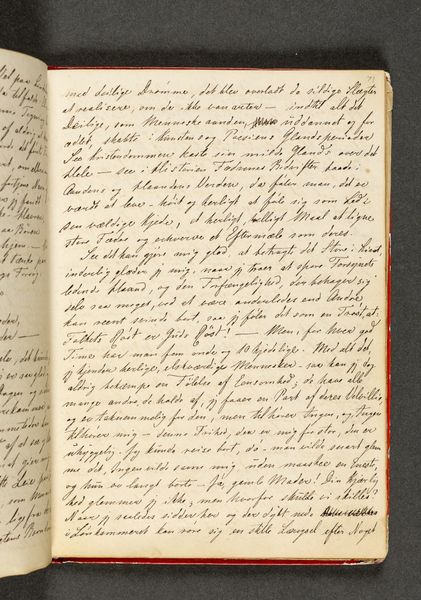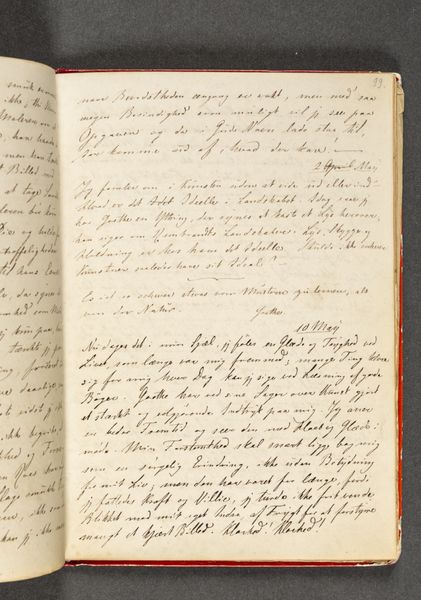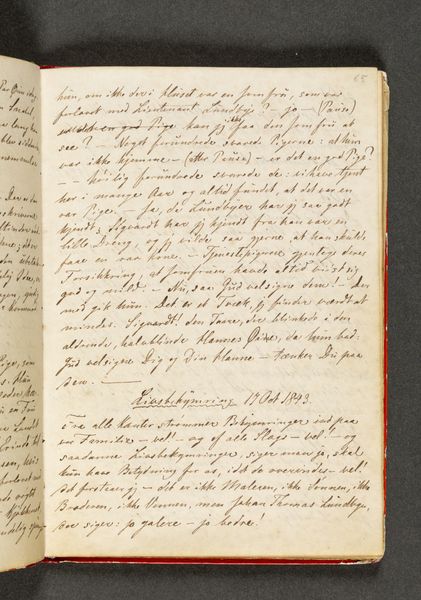
drawing, paper, ink
#
drawing
#
landscape
#
paper
#
ink
#
journal
#
romanticism
Dimensions: 192 mm (height) x 133 mm (width) (bladmaal)
Editor: Johan Thomas Lundbye's "Dagbog. Side 95," or "Diary. Page 95," created in 1844. It’s ink on paper, and looking at it, the densely written text gives it the feel of a private, intimate space, a world only accessible through Lundbye's thoughts. What can you tell me about this piece? Curator: Considering its historical context, this diary page provides an interesting glimpse into 19th-century Danish Romanticism, moving past idealized landscapes towards a more personal connection with nature. Diaries were a powerful tool for artists to record not just observations but also emotional responses. I’m wondering what the act of writing in a personal journal could signify? Editor: Perhaps a need to categorize or claim ownership of an experience? Turn the subjective into an objective reality through language? Curator: Exactly. Romanticism celebrated individual experience and emotional intensity. Lundbye uses the journal as an instrument. Think of it as sketching, not with a pencil, but words; how does this impact how we interpret other landscapes of the era? How does this seemingly personal act tie into broader social ideas about self and expression at that time? Editor: That's fascinating, so it's not just a private outpouring, but it reflects, and is shaped by, societal trends. Curator: Precisely. And this helps to better understand not just Lundbye, but how the political and social spheres intertwined with artistic production in the 19th century. Editor: This look into the societal role of the artist helps explain how personal reflection is as important as visual representation. Thank you!
Comments
No comments
Be the first to comment and join the conversation on the ultimate creative platform.
